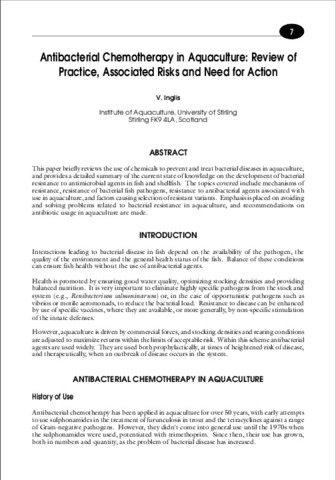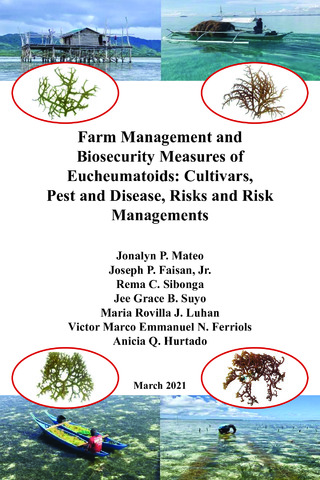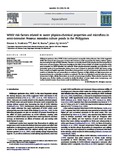| dc.contributor.author | Bondad-Reantaso, Melba G. | |
| dc.contributor.editor | Tendencia, Eleonor A. | |
| dc.contributor.editor | de la Peña, Leobert D. | |
| dc.contributor.editor | de la Cruz, Joesyl Marie V. | |
| dc.date.accessioned | 2019-07-23T08:09:13Z | |
| dc.date.available | 2019-07-23T08:09:13Z | |
| dc.date.issued | 2019 | |
| dc.identifier.citation | Bondad-Reantaso, M. G. (2019). Risk analysis in aquaculture. In E. A. Tendencia, L. D. de la Peña, & J. M. V. de la Cruz (Eds.), Aquatic Emergency Preparedness and Response Systems for Effective Management of Transboundary Disease Outbreaks in Southeast Asia: Proceedings of Asean Regional Technical Consultation, 20-22 August 2018, Centara Grand Central Ladprao, Bangkok, Thailand (pp. 85-91). Tigbauan, Iloilo, Philippines: Aquaculture Department, Southeast Asian Fisheries Development Center. | en |
| dc.identifier.isbn | 9789719931089 | |
| dc.identifier.uri | http://hdl.handle.net/10862/3470 | |
| dc.description.abstract | The information presented in this paper were taken from several key FAO documents. The objective is to continuously raise awareness about the concept of risk analysis and its application to the aquaculture sector.
The paper provides information in response to several key risk questions, e.g.: (1) what is risk versus hazard, (2) what is risk analysis, (3) who uses risk analysis, (4) why do countries need to be able to use risk analysis? An overview of the risks in aquaculture is also provided in terms of the process and approaches; and the different risk sectors in aquaculture.
The paper concludes with some key points and challenges. Risk analysis is a decisionmaking tool that contributes to protecting national health and welfare. It can also contribute to sustainable aquaculture and the success of individual aquaculture businesses and operations. Risk analysis does not stand alone - it supports and is supported by other components of a National Strategy on Aquatic Animal Health. A basic strength of the risk analysis process is its flexibility - it is adaptable to almost any sector/system where risk and uncertainty occur.
Countries will often be confronted with a lack of scientific information, both quality and quantity, to support the risk analysis process. Nevertheless, governments must often act under these uncertainties as well as make decisions in the face of a great deal of complexity, significant variability, and multiple management goals. | en |
| dc.language.iso | en | en |
| dc.publisher | Aquaculture Department, Southeast Asian Fisheries Development Center | en |
| dc.title | Risk analysis in aquaculture | en |
| dc.type | Conference paper | en |
| dc.citation.spage | 85 | |
| dc.citation.epage | 91 | |
| dc.subject.asfa | disease control | en |
| dc.subject.asfa | Disease detection | en |
| dc.subject.asfa | disease resistance | en |
| dc.subject.asfa | disease transmission | en |
| dc.subject.asfa | epidemiology | en |
| dc.subject.asfa | husbandry diseases | en |
| dc.subject.asfa | aquaculture regulations | en |
| dc.subject.asfa | quarantine regulations | en |
| dc.subject.asfa | fish culture | en |
| dc.subject.asfa | fish diseases | en |
| dc.subject.asfa | aquaculture | en |
| dc.subject.asfa | risk management | en |
| dc.subject.asfa | documents | en |
| dc.subject.asfa | analysis | en |
| dc.subject.asfa | Risks | en |
| dc.subject.asfa | aquatic animals | en |
| dc.subject.asfa | sustainable aquaculture | en |
| dc.subject.asfa | countries | en |
| dc.citation.conferenceTitle | Aquatic Emergency Preparedness and Response Systems for Effective Management of Transboundary Disease Outbreaks in Southeast Asia: Proceedings of Asean Regional Technical Consultation, 20-22 August 2018, Centara Grand Central Ladprao, Bangkok, Thailand | en |



